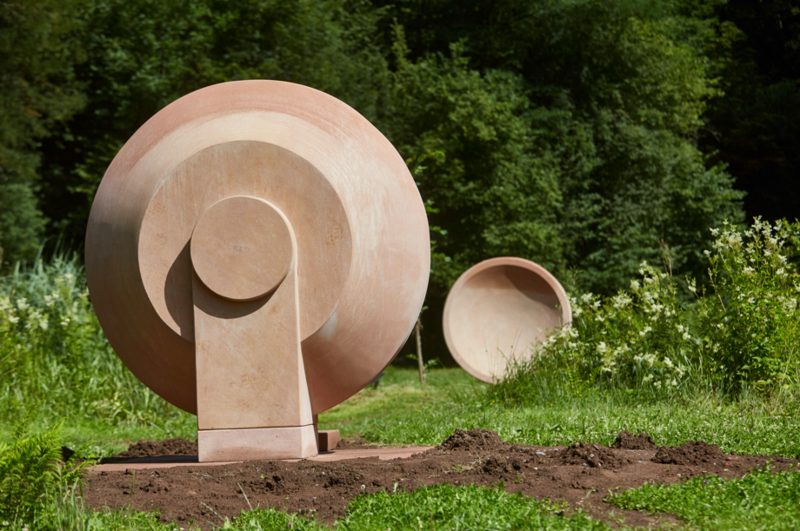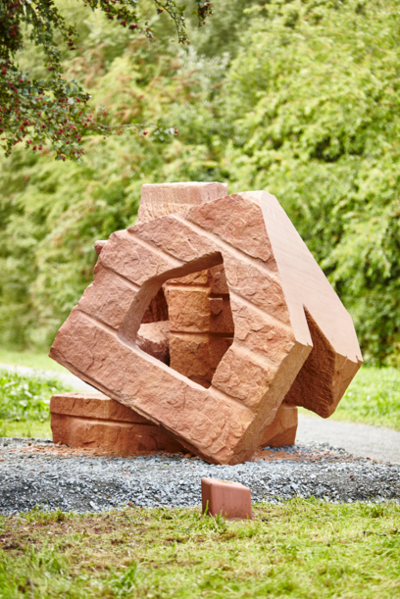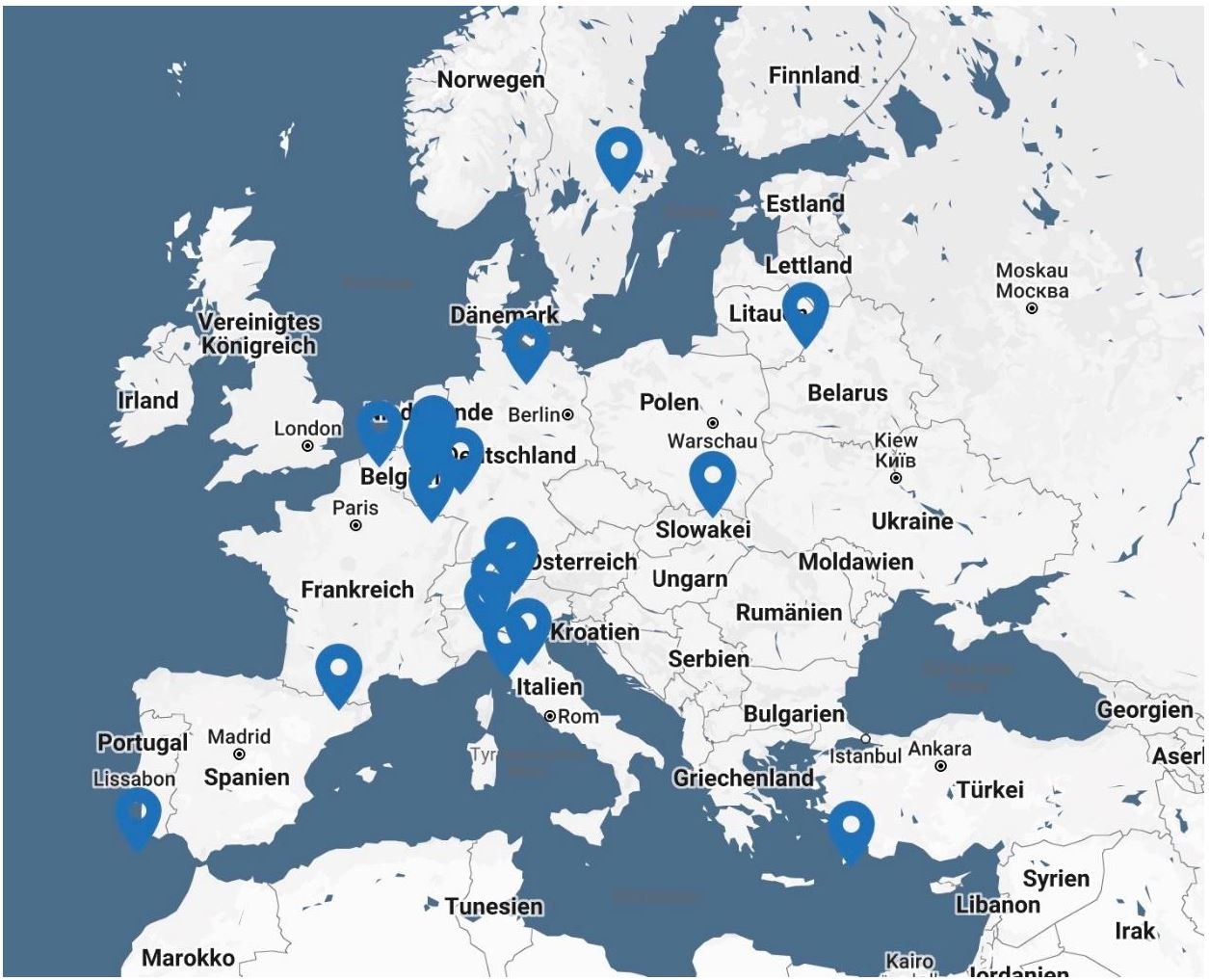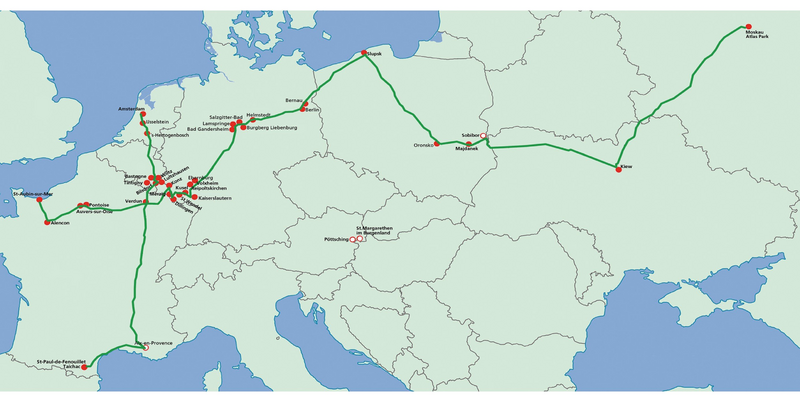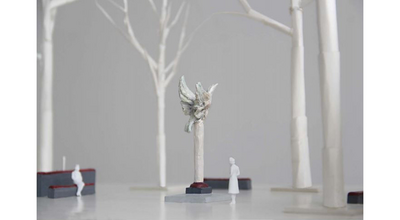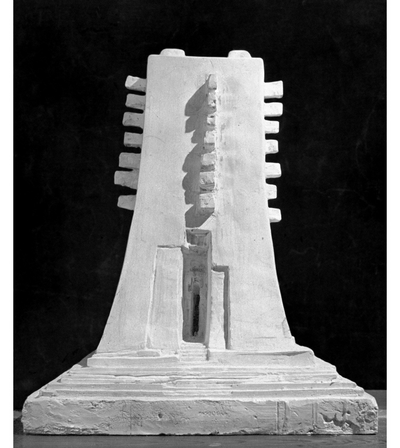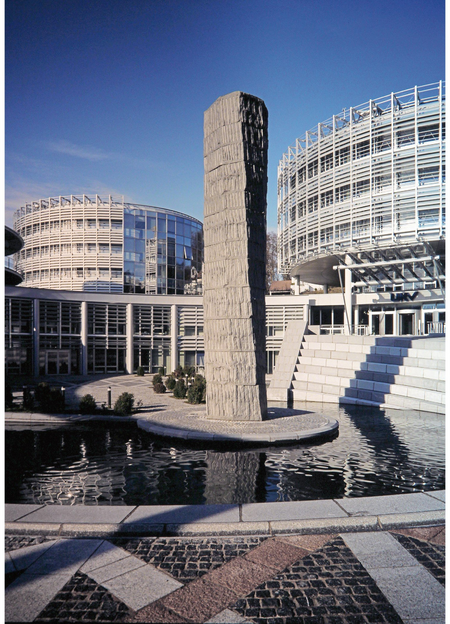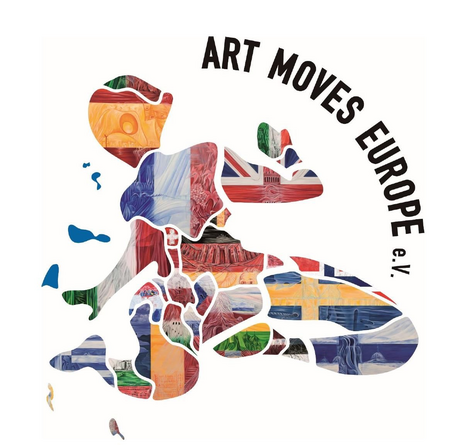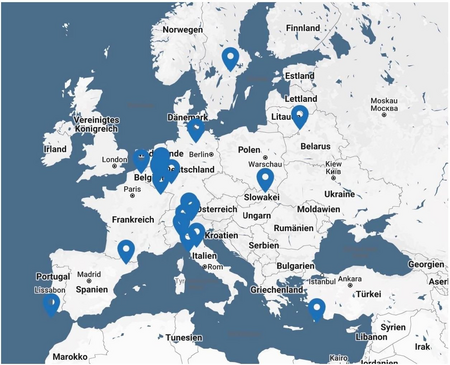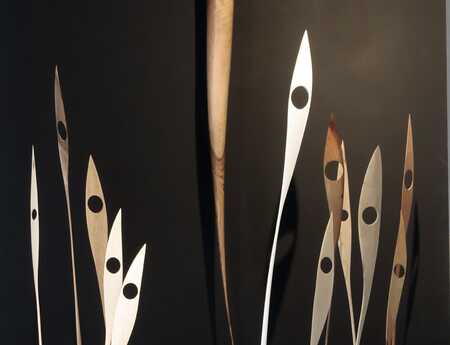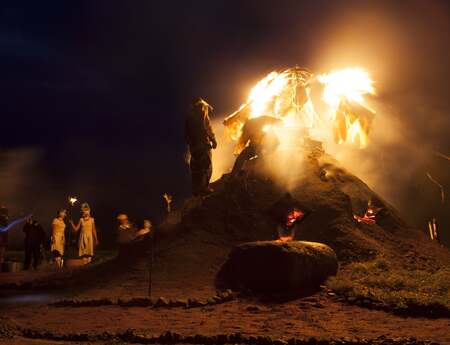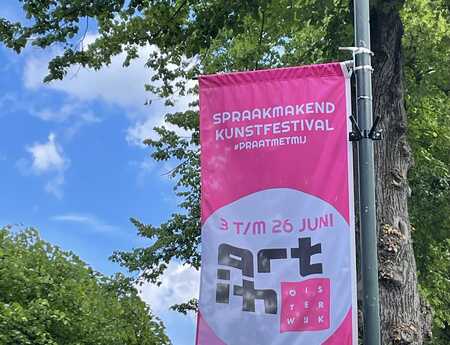On the Road of Peace
The sculpture network Online Club that took place on 4th April 2022 was all about exchange, communication and European thinking. In their presentations on three European sculpture projects, from the minuscule to the gargantuan, our guests Claudia Grodd, Alfred Mevissen and Cornelieke Lagerwaard provided us with the meaning of art in each other’s cultures and their great potential to contribute to peace.
Peace: a big word, a big topic, and a big, ubiquitous desire, the realisation of which is unfortunately often all too troublesome, as the current situation in Europe makes frighteningly clear. How did peace get to this state? How can we start to promote it? At the latest sculpture network online club on 4th April 2022, our guests each had their own approach to this: where there is communication, there is potential for peace. And so, communication, togetherness and exchange between artists (and their audiences), as well the cross-border cultural contact, were the focus of this enriching evening. Over the course of the night more than 90 participants were able to walk along three different European sculpture trails – and in the footsteps of a pacifist who wanted to make the world that little bit better. Because what would be a better symbol for peace, than a street that’s entire existence is for connecting places – and people! – with each other?
A Mark of Peace in South Germany: The Kaiserlauter Sculpture Trail
As part of the large, Europe-wide project The Road of Peace, which we were to learn a lot about through the course of the event, representative of the Rhineland-Palatinate Sculpture Club e. V. Claudia Gross, gave us the first taste of what visitors would expect on the trail.
The club has engaged in the Rhineland art landscape for 35 years and have continually cared for and improved Johanneskreuz’s sculpture trails, from Kaiserlauter to Quiedersbach, throughout that time. The 81 sculptures made from local sandstone are a result of ten forums, to which visitors are occasionally invited to by Jürgen Picard and the Carl Picard natural stone factory. Every two to three years, five selected German and international artists come together over the summer to make their mark on the trail and the Road of Peace. The collaborative creation process is a central aspect of the forum and facilitated by a common theme. A togetherness that contributes to an understanding between different nationalities and illustrates how inspiring exchange can be.
Claudia Gross conveys a magical impression of the wholly different pieces on the trail and their interaction with the picturesque landscape of the Rhineland. Particularly interesting to all of the artists in the audience: the bid for the next forum in the summer of 2023 is still running until 30th April. The theme: peace and democracy.
The Heart of Europe: The Art Moves Europe Initiative
Our second speaker is intensely involved in the theme of peace. Alfred Mevissen is the founder of the Art Moves Europe e. V. initiative, a group whose aim is to make using sculpture as a medium for intercultural understanding have a greater presence, and to promote European thinking through art.
Alfred, who is an artist and staunch European himself, has passionately engaged with this idea since 2018 and, in addition to a touring exhibition on the theme of European values, an experimental project Unity in Diversity (a free collaboration between different artists working together on a single sculpture) and a forum on Vision for Europe, has also launched the European Sculpture Path. Its opening ceremony will take place on 9th May 2022 at various participating locations. The idea of this sculpture trail is to connect European countries more closely through shared visions for the future of Europe, symbolised by at least one sculpture per country, each being a minimum of two metres in diameter. Politics plays a subordinate role: Art Moves Europe is in fact trying to demonstrate unifying moments that go beyond borders and citizenship, bringing values to the foreground. With 21 sculptures in 14 countries to date, a lot has already been achieved, but there is still more to do, which is why Alfred is calling for cooperation and participation in the project.
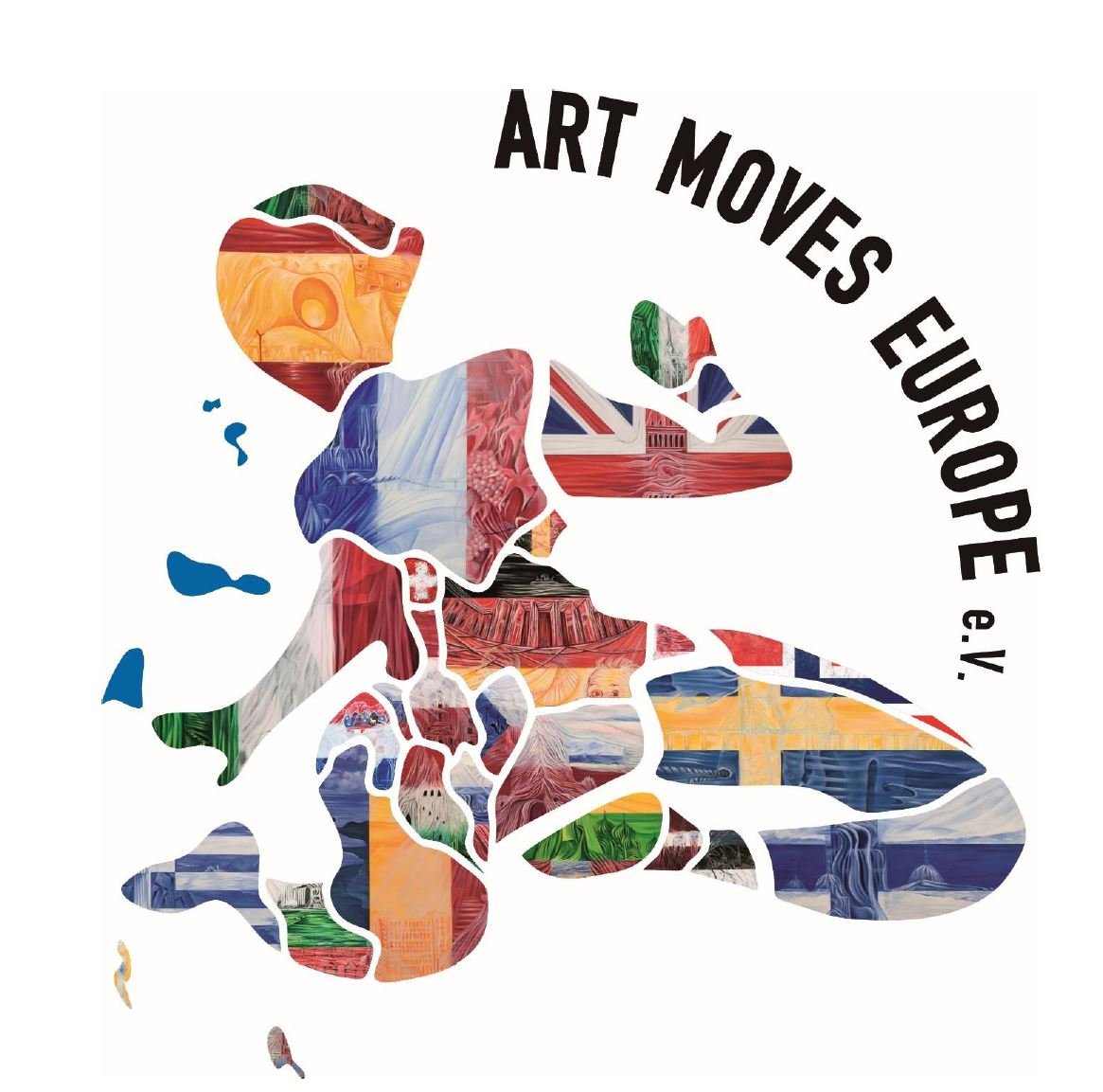
Away From Borders: The Road of Peace
Most eagerly awaited was Cornelieke Lagerwaards’ presentation of the large project “The Road of Peace – The Street of Sculptures in Europe,” the name of which had already been mentioned earlier on in the evening. Especially against the backdrop of the current situation, this is a project whose importance can hardly be overestimated. Cornelieke, co-chair of the club, takes us on a moving journey through the approximate 90-year history of the idea; a sculpture trail bringing once hostile nations together. Against the backdrop of political tensions in Europe, German artist and pacifist Otto Freundlich was already designing a Lighthouse of Peace as early as the 1930s. As a memorial against violence and war and as a communicative meeting place, it was to stand out in the landscape, visible from afar, and be connected to other monuments of this kind by a path. The project was never executed: Freundlich, a Jew who was labelled as a “degenerate artist,” was deported by the Nazis and murdered in 1943. His life partner, artist Jeanne Kosnick-Kloss, kept a record of it even after his death. She described two concrete routes through Europe that connected the allies’ landing beaches at Normandy with Moscow, and Freundlich’s place of refuge in the Pyrenees with Amsterdam. At the junction of the two trails in Auvers-sur-Oise, she imagined Freundlich’s Lighthouse of Peace being built in the midst of an artists’ colony that would bring people of all nationalities together, united by their love of art.
Despite Kosnick-Kloss’ vision never coming to fruition, it did plant the seed for the Road of Peace. In the 1970s, artist Leo Kornbrust and poet Felicitas Frischmuth resurrected the idea. The pair laid down the foundations for the initiative in 1971 by organising an international symposium in the south German town of St. Wendel near to the French border.
This was a revolutionary format at the time and a stark contrast to the solitary work taking place in the studio. It was the start of an initiative that today unites over 500 works of art, and countless projects and peace initiatives throughout Europe, all under its umbrella. With the sculpture accrued during the forum, a sculpture trail was founded along the French-German border in 1973 – the first section of the Street of Sculptures in Europe which, according to Freundlich’s and Kosnick-Kloss’ plan, should gradually form over the next 50 years thanks to partners and initiatives in the participating countries. In St. Wendel in 1988, Leo Kornbush dedicated one of three pyramids on the Street of Sculptures to the father of the idea, Otto Freundlich – the other two stand in Normandy and Moscow. A disconcerting thought, that makes it startlingly clear how necessary the Road of Peace is, particularly today, and how vital it is that we cherish it.
Cornelieke compares the project to an amoeba: a single-cell organism consisting of one thought – the desire for peace and understanding – which doesn’t have a fixed form, but is rather subject to constant change. Partners of the project change, new ones come, old ones go. Analogous to the respective political situation, the Road of Peace is also in a state of constant change. The fact that it connects and unites nations is not a matter of course, but requires constant communication, exchange, and mutual understanding. This should make us clearly aware that peace does not sustain itself, and that we must be constantly striving for it anew.
For those who would like a better impression of the background of this monumental European initiative, the documentary Das geht nur langsam by Gabi Bollinger [in German with English subtitles] is highly recommended. Watch the trailer linked below for a little taste of it:
Cover picture: Leo Kornbrust: High heptagon, 1995, Height: 12,5 metres, Impala granite, 12 stone blocks, Saarbrücken, Germany
